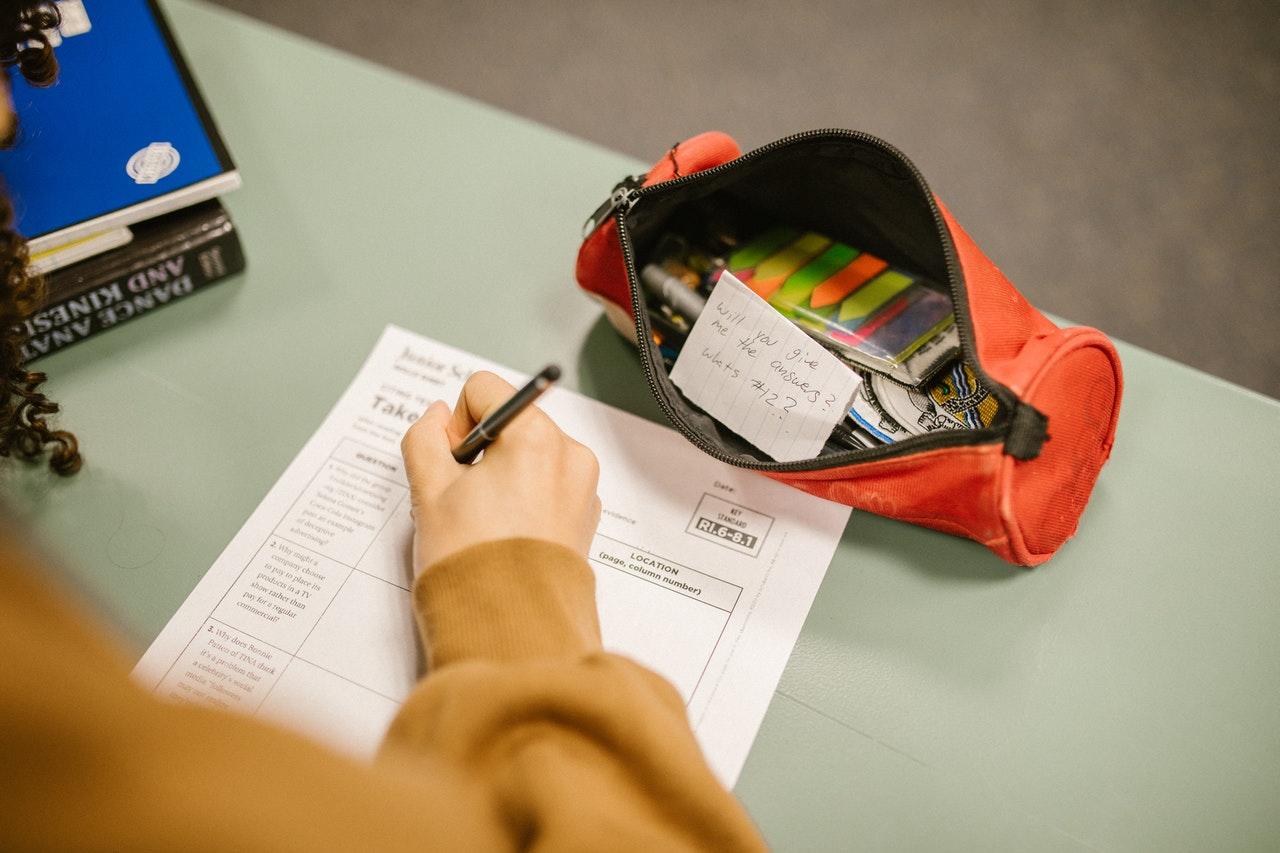"Hey, what's your plan after high school?"
"I'll probably enrol for Form Six studies as I'm interested to study engineering in a local university."
"So you'll still be going to schools and sitting for exams like SPM? "
"It used to be a terminal system, but now we can study in semesters like other Pre-University students too."
"I see, that's great!"
Since 2012, Form Six students have been using a newly revised syllabus throughout 3 semesters where the candidates will sit for an examination at the end of the term. The same applies to Science subjects like Physics, Chemistry and Biology too.
If you're interested to take Physics for STPM, be sure not to skip any parts of this article!

Mastering The Actual Examination Format for STPM Physics
Each semester, students will study chapters of various Physics themes that will expose them to Pre-University level Physics. The chosen themes are mechanics and thermodynamics, electricity and magnetism, oscillations and waves, optics and modern physics.
Altogether, there are 25 chapters.
Pay attention to the following points as they are crucial to help you explore the format of this subject.
a) Knowing the complete syllabus throughout the semesters
Chapters in Semester 1
- Physical Quantities and Units
- Kinematics
- Dynamics
- Work, Energy and Power
- Circular Motion
- Gravitation
- Statics
- Deformation of Solids
- Kinetic Theory of Gases
- Thermodynamics of Gases
- Heat Transfer

Source: Pixabay
Chapters in Semester 2
- Electrostatics
- Capacitors
- Electric Current
- Direct Current Circuits
- Magnetic Fields
- Electromagnetic Induction
- Alternating Current Circuits
Chapters in Semester 3
- Oscillations
- Wave Motion
- Sound Waves
- Geometrical Optics
- Wave Optics
- Quantum Physics
- Nuclear Physics
b) Knowing the number and types of papers (theory and practical assessments)
For STPM Physics, you will be sitting for 4 papers if you are a current Form Six student.
- 960/1 [Physics Paper 1] Written practical test for semester 1
- 960/2 [Physics Paper 2] Written practical test for semester 2
- 960/3 [Physics Paper 3] Written practical test for semester 3
- 960/4 [Physics Paper 4] School-based Assessment of Practical throughout 3 semesters
You will sit for Physics Paper 1/2/3 and Physics Paper 4 for the 3 semesters.
The written practical test consists of Section A, Section B and Section C where all questions will be asked based on the chapters listed above.
- Section A: 15 multiple choice questions
- Section B: 2 compulsory structured questions
- Section C: 3 essay questions (Choose to answer 2)
The school-based assessment comprises 13 compulsory experiments (throughout 3 semesters) and one coursework project (during the 3rd semester).
The duration of the written practical tests is 1 hour and 30 minutes.

Source: Photo by RODNAE Productions from Pexels
c) Knowing the marks allocation and weightage for each section
Now, let's take a look at the mark allocation and weightage for each section.
Written practical tests:
- Section A: 15 marks
- Section B: 15 marks
- Section C: 30 marks
Total: 60 marks
School-based assessments:
Total cumulative marks is 225 marks (scaled to 45 marks)
To calculate your CGPA for STPM Physics, you have to convert the marks for each semester into weightage, which will amount to 100%.
Written practical test for Semester 1: 60 marks (26.67%)
Written practical test for Semester 2: 60 marks (26.67%)
Written practical test for Semester 3: 60 marks (26.67%)
School-based assessments for 3 semesters: 45 marks (20%)
Making The Best Out Of The STPM Physics Marking Scheme
Let's continue to talk about numbers. You need to know what makes it count for this paper.
It's so essential to know the latest STPM Physics marking scheme aka how your assessments are graded.
Knowing what works vs what doesn't work will set you apart from the rest when it comes to getting that A!
You can refer to the below performance description that has been listed down by MPM for STPM Physics.
A candidate who scores grade A in STPM Physics should:
- Recall the fundamental knowledge of Physics from the syllabus with few significant omissions;
- Show good understanding of the fundamental principles and concepts;
- Identify the appropriate information and apply the correct techniques to solve problems;
- Communicate effectively using logical sequence based on physics fundamentals, including usage of mathematical expressions, schematic diagrams, tables and graphs;
- Synthesise information from fundamental principles of different content areas in problem-solving;
- Show good understanding of the underlying working principles and carry out extensive calculation in numerical-type questions;
- Make adaptations, appropriate assumptions and use the fundamental knowledge of Physics in analyzing an unfamiliar situation;
- Identify causes, factors or errors in questions involving experiments;
- Shows good knowledge relating precision of data to the accuracy of the final result;
- Interpret and evaluate critically the numerical answer in calculations.
While multiple-choice questions are pretty straightforward, the above performance description can help you to organize your answers in Section B and Section C for full marks.
For instance, you'll know that you have to not only just write the basic formula/ equation, but also explain the unknown symbols in them before putting in the given figures of the question.
Let's say you come across a question that is related to the Ideal gas equation.
1)You have to write down the equation: pV =nRT
2)You have to list down p=pressure, V=volume, n=amount of substance, R=ideal gas constant, T=temperature
3)Put in the numbers to replace the symbols for the final answer.
4)Round up the final answer to the required significant figure (normally it is 2).
Studying Past Year Papers To Apply The Right Answering Techniques
For the final lap of your revision, the endless memorization and note-taking route may not be that effective anymore.
You'll probably want to get a real taste of what you will face in your actual exams.
That's when you have to shift your attention to doing past year papers for these two main reasons.
a) Matching the learning outcome of each chapter to your current understanding
We strongly advise you to have a copy of the STPM Physics syllabus (provided by MPM) with you while you're revising your past year papers.
For instance, after you've answered the questions that are related to Linear Motion (Kinematics), you can check whether you are able to apply and use equations of motion with constant acceleration and sketch and use the graphs of displacement time, velocity-time and acceleration-time for the motion of a body with constant acceleration.
b) Fostering repetition and reflection
When you've gradually mastered the answering techniques and your overall comprehension of the paper, you can then move deeper to study the pattern of recurring questions. This is especially relevant in terms of calculation questions and descriptive questions.
You'll be familiar with physics concepts that are frequently asked in the form of definitions, characteristics as well as what is required to secure full marks when you're solving an equation to a problem.
In the long run, this will help you to develop a keen sense to answer them better.
Check out these sources to find past year STPM Physics papers for your revision.

Source: Photo by George Pak from Pexels
Ways To Approach Private Tutoring For STPM Physics
While many may think of private tutoring as a "burden" beyond your schooling hours, we beg to differ.
You'll be surprised how you can benefit greatly from private tutoring when you're preparing for an intense and important exam like STPM.
With the help of Superprof, you'll easily find and hire a tutor that offers STPM Physics lessons near you.
How does this work?
Superprof is an education platform that connects passionate students and amazing tutors from all across the world for a variety of subjects, online or in person.
Our Superprof tutors are certified and reviewed by the student themselves, where students get to explore private tutoring in a flexible and convenient manner.
The range of subjects that are offered include:
- Arts and Hobbies
- Professional Development
- Computer Sciences
- Languages
- Music
- Health and wellbeing
- Academic tutoring such as Physics in this case
- Sports
Here are three ways to look at private tutoring as a STPM student.
a) Building a stronger foundation on every chapter
Firstly, having a private tutor means you can dedicate more time to "relearn" and "remaster" all the chapters in detail. During lessons, you'll get to review the core physics concepts systematically without having to "wait" for others or to rush through the syllabus.
The focus of your lessons is to make sure you truly understand what is taught and fill in the gaps that you have previously missed when you were studying on your own.
b) Polishing your answering techniques
Secondly, you will receive guidance and tips from your Physics tutor on how to answer better for your actual papers. Be prepared to do lots of past year papers, trial papers from other states/ schools as it serves as a great way to dive deep into each section of STPM Physics.
It is never enough to stop at learning and memorizing the facts without putting them all on paper to see how much you truly know to apply them and connect the dots. From there, you'll know the right way to score.
"Knowledge isn't power until it's applied." -Dale Carnegie
c) Cultivating confidence and consistency
Thirdly, private tutoring sets you into the rhythm of active learning. The act of repeated lessons will cause you to feel confident whenever you are doing your final revision up till the moment when you're answering the questions each semester.
You'll no longer be drowned in panic when you read the questions because you are fully prepared right from the start with the help of an experienced and amazing Superprof Physics tutor!
We hope this article has been helpful to provide you with a comprehensive guide to understanding STPM Physics.

























